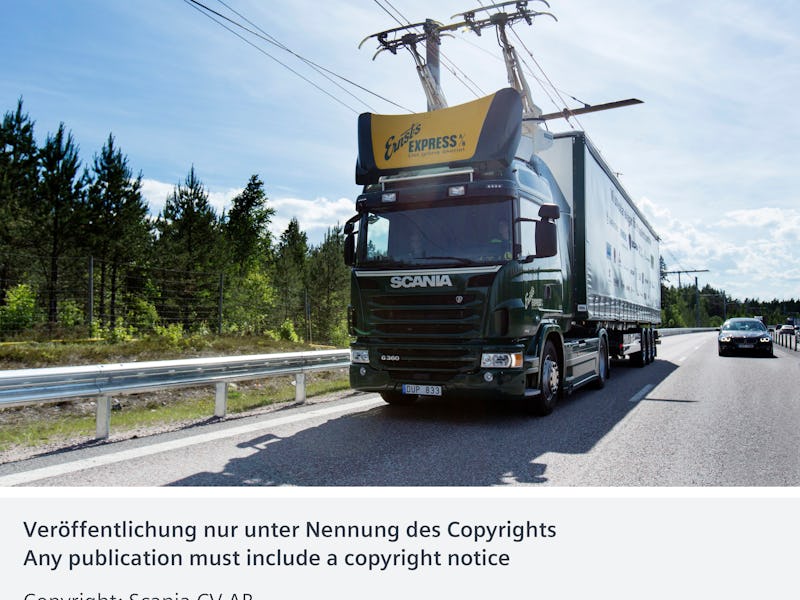Sweden Debuts Its First Electric Highway
Sweden's highway of the future is a little old-school.

A highway in central Sweden is testing out a new way to keep trucks moving: an electric highway.
The newly installed wiring above the highway’s eastbound slow lane looks like the cables that electric trolleys use in many European cities. But on this stretch of road, the wiring isn’t for buses — it’s for any truck that wants to connect for any period of time to the power lines.
The project manager, Magnus Ernström, explained to Radio Sweden that the route, designed by Siemens, is an important throughway for commercial shipping. The eastbound railroad parallel to the road is already at capacity, so Ernström described the electric lane as a “flexible railroad.” The cables only extend two kilometers, but Swedish authorities hope to extend them to cover 200 kilometers of road soon.
Trucks fitted with an intelligent connector, called a pantograph, can connect and disconnect seamlessly from the cables at speeds of 90 kilometers an hour, allowing trucks to pass in other lanes and continue operating normally on non-electrified roads.
The system will cut energy use in half, according to Siemens.
Sweden’s experiment in electrifying its roads looks pretty old-school in comparison to other experiments in countries like South Korea and the United Kingdom. Three years ago, South Korea debuted a bus lane that electronically charges the vehicles wirelessly. The 15-mile route charges buses through magnetic charge plates located on the road and inside the buses. The United Kingdom is also in the early stages of researching a wireless highway lane for all electric vehicles to use.
But Ernström seems confident that the future still has room for wired solutions to charging electric vehicles. “Heavy traffic needs a lot of energy and you have to have a conductive technology if you want to run them on electricity today, that is, you need to have a connection between a wire and the system in the truck,” he told Radio Sweden.
“If you would run a heavy truck on battery, it would need 20 tons of battery to transport maybe 30-40 tons of cargo, so you would not have so much room left for the cargo.”